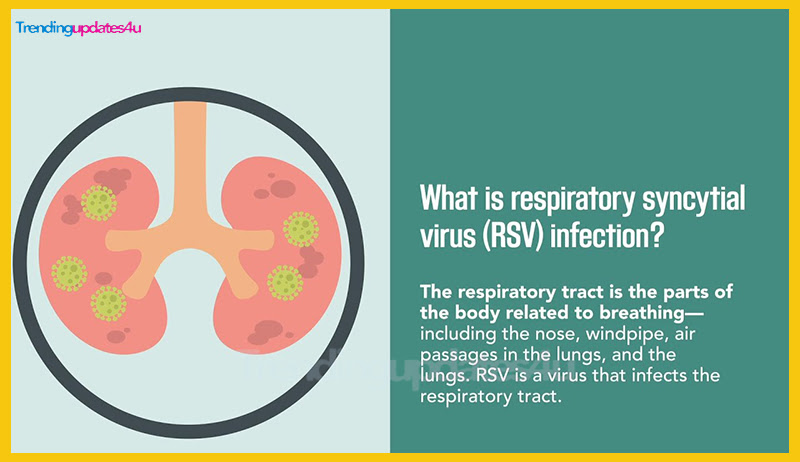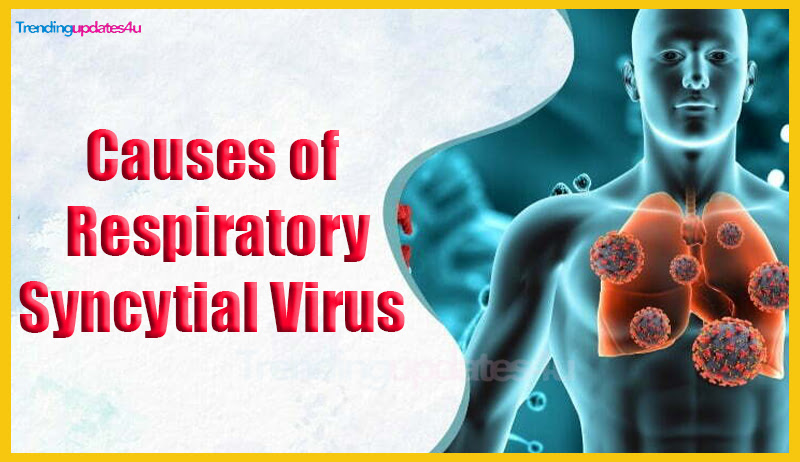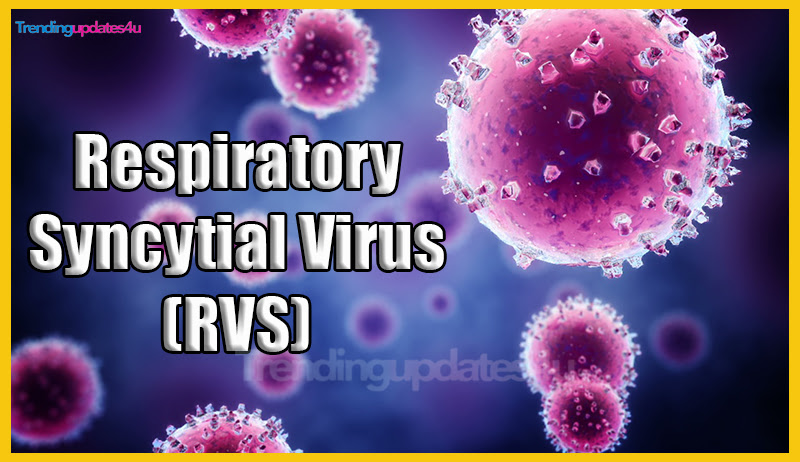Respiratory Syncytial Virus:- Respiratory Syncytial Virus (RSV) is a highly contagious virus that primarily affects the respiratory system, causing infections ranging from mild cold-like symptoms to severe respiratory conditions. RSV is a significant cause of lower respiratory infections, particularly in infants, young children, the elderly, and individuals with compromised immune systems. This article provides a comprehensive explanation of RSV, including its symptoms, causes, structure, and the impact it has on health.
Respiratory Syncytial Virus (RSV)
Respiratory Syncytial Virus (RSV) is a significant cause of respiratory infections that primarily affect the lungs and the respiratory tract. While it is common among children, especially those under the age of 2, adults and older children can also contract this virus. Although RSV symptoms are usually mild in most people, it can cause severe complications in certain high-risk groups, such as infants, older adults, and individuals with weakened immune systems. In this article, we will explore the symptoms, causes, structure, and preventive measures associated with RSV to help you understand the virus better and take necessary precautions.
Respiratory Syncytial Virus Details
| Aspect | Details |
| Article for | Respiratory Syncytial Virus (RSV), Symptoms, Causes & Structure of RSV |
| What is RSV? | A common respiratory virus causing infections in the lungs and respiratory tract, primarily affecting children. |
| Common Symptoms | Congested nose, dry cough, sore throat, fever, sneezing, headache. |
| Causes | Virus enters through eyes, nose, or mouth and spreads easily. |
| Complications | Pneumonia, bronchiolitis, middle ear infections, asthma, and repeated infections. |
| Prevention | Antibody products (e.g., nirsevimab) for infants, RSV vaccines for pregnant individuals and older adults. |
| Treatment | Mild symptoms often resolve on their own, but severe cases may require hospitalization, oxygen therapy, and fluids. |
| Category | Health |
What is Respiratory Syncytial Virus (RSV)?
RSV is a highly contagious virus that primarily affects the respiratory system. It is the leading cause of respiratory illness in young children and infants worldwide. Though RSV can mimic symptoms similar to the common cold in healthy individuals, it can be severe in vulnerable populations, leading to complications such as pneumonia, bronchiolitis, and even hospitalization.

Symptoms of Respiratory Syncytial Virus (RSV)
RSV symptoms can vary based on the age and overall health of the individual. In mild cases, symptoms resemble the common cold, while more severe cases can lead to serious respiratory distress. Common symptoms include:

Common Symptoms in Adults & Older Children
In healthy adults and older children, RSV symptoms are usually mild and resemble a common cold. These symptoms include:
- Congested or runny nose
- Dry cough
- Low-grade fever
- Sore throat
- Sneezing
- Headache
These symptoms typically appear about 4 to 6 days after exposure to the virus and may last for one to two weeks. Although mild, the symptoms can still cause discomfort and require rest and hydration.
Severe Symptoms in High-Risk Groups
In high-risk individuals, such as infants, the elderly, and those with weakened immune systems, RSV infection can lead to more severe symptoms. These include:
- Fever
- Severe cough
- Wheezing (a high-pitched noise when exhaling)
- Rapid breathing or difficulty breathing
- Bluish color of the skin (cyanosis)
Symptoms in Infants:
In infants, RSV infection can cause the following severe symptoms:
- Short, shallow, and rapid breathing
- Struggling to breathe, with chest muscles pulling inward with each breath
- Coughing
- Poor feeding
- Lethargy (unusual tiredness)
- Irritability
Causes of Respiratory Syncytial Virus Infection
RSV spreads through the eyes, nose, or mouth. The virus is transmitted when an infected person coughs or sneezes, releasing respiratory droplets into the air. It can also spread through direct contact, such as shaking hands or touching contaminated surfaces like countertops, toys, and crib rails.

People are most contagious during the first week of the infection, but in infants and those with weakened immune systems, the virus can continue to spread for up to four weeks, even after symptoms have resolved.
Risk Factors for Severe RSV Infection
While RSV can infect anyone, certain groups are at higher risk of severe infections. These include:
- Infants, especially premature babies or those under 6 months old
- Children with congenital heart disease or chronic lung conditions
- Individuals with weakened immune systems, such as those undergoing cancer treatments
- Older adults, particularly those aged 65 and above
- Children with neuromuscular disorders, such as muscular dystrophy
RSV outbreaks tend to occur during the fall and spring, with children who attend daycare or school being at an increased risk of exposure.
Complications of RSV Infection
Severe RSV infections can lead to various complications, including:
- Hospitalization: In severe cases, RSV infections may require hospitalization, especially if breathing difficulties are present or intravenous fluids are needed.
- Pneumonia: RSV is the most common cause of pneumonia in infants and can lead to inflammation in the lungs, causing severe breathing problems.
- Middle Ear Infections: RSV infections can lead to otitis media (middle ear infections), which are common in infants and young children.
- Asthma: There may be a link between severe RSV infections in childhood and an increased risk of developing asthma later in life.
- Repeated Infections: While mild RSV infections can be experienced more than once, individuals with chronic heart or lung disease are at a higher risk for complications.
Structure of Respiratory Syncytial Virus (RSV)
RSV is an enveloped virus with a single-stranded RNA genome. The virus contains surface proteins that help it attach to and enter host cells in the respiratory tract. The spike proteins on the virus’s surface enable it to infect cells lining the upper and lower respiratory tract, leading to the inflammation that causes the symptoms of the disease. RSV primarily targets the cells in the small airways of the lungs, leading to bronchiolitis and pneumonia in severe cases.

Treatment & Prevention of RSV
While there is no specific antiviral treatment for RSV, supportive care is often used to manage symptoms. In mild cases, treatment may include rest, hydration, and fever management. For more severe infections, oxygen therapy, intravenous fluids, or mechanical ventilation may be required.
Preventative measures to reduce the risk of RSV infection include:
- Hand hygiene: Frequent handwashing with soap and water helps reduce the spread of the virus.
- Avoid close contact: Keep babies, especially those under six months, away from individuals showing symptoms of a cold or respiratory illness.
- Cleaning surfaces: Disinfecting surfaces that may be contaminated with the virus can help prevent the spread of infection.
- Palivizumab: A monoclonal antibody, palivizumab, may be administered to high-risk infants to reduce the severity of RSV infections.
Vaccines for RSV are still in development, but recent advances are promising. Researchers are working on creating effective vaccines that can protect both infants and vulnerable populations.
When to See a Doctor?
If you or your child experience severe symptoms such as difficulty breathing, a high fever, or a bluish color around the lips or nails, seek immediate medical attention. These signs may indicate a severe RSV infection that requires hospitalization.
Conclusion
RSV is a highly contagious virus that can cause mild cold-like symptoms in most individuals, but it can be severe for infants, older adults, and those with weakened immune systems. Early detection and proper care can help manage the symptoms effectively. If you or your loved ones are at risk of severe infection, it’s essential to take preventive measures and seek medical advice. Stay informed and take the necessary steps to protect yourself and your family from RSV.
FAQ’s
What is Respiratory Syncytial Virus (RSV)?
RSV is a common virus that causes infections in the lungs and respiratory tract. It is especially prevalent in young children, and most children have been infected by the age of 2. It can also affect adults, particularly those with weakened immune systems or pre-existing health conditions.
How is RSV transmitted?
RSV spreads easily through respiratory droplets when an infected person coughs or sneezes. It can also be transmitted by touching contaminated surfaces, such as doorknobs or toys, and then touching the eyes, nose, or mouth.
Who is at risk of severe RSV infection?
Certain groups are more vulnerable to severe RSV infections, including:
- Infants, especially premature babies
- Older adults, particularly those over 65
- People with chronic lung or heart diseases
- Individuals with weakened immune systems due to conditions like cancer or HIV/AIDS
How can I prevent RSV infection?
Preventative measures include:
- Good hand hygiene (washing hands frequently)
- Avoiding close contact with infected individuals
- Disinfecting common surfaces
- Using RSV vaccines for pregnant individuals and older adults, as well as antibody treatments for high-risk infants
How is RSV treated?
Most mild cases resolve with rest, hydration, and over-the-counter medications to relieve symptoms. Severe cases may require hospitalization for oxygen therapy, intravenous fluids, and close monitoring of breathing and heart function.
Can RSV cause serious complications?
Yes, in severe cases, RSV can lead to complications such as:
- Pneumonia (lung inflammation)
- Bronchiolitis (inflammation of small airways in the lungs)
- Middle ear infections (otitis media)
- Long-term issues such as asthma in children who experienced severe RSV infections
Check This:-

Great content! Super high-quality! Keep it up! http://www.hairstylesvip.com